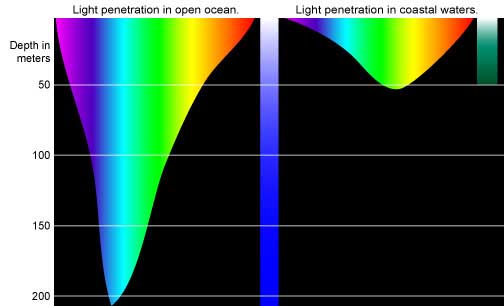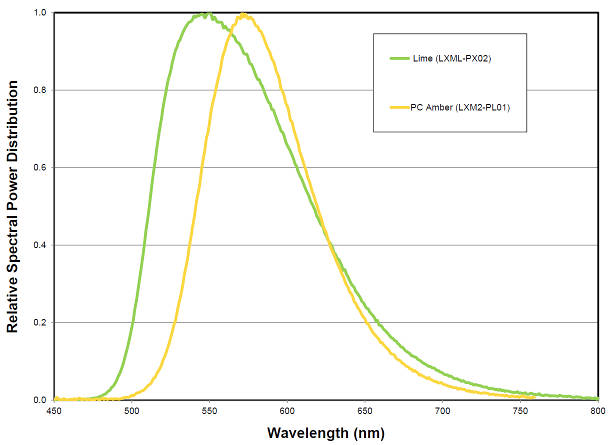


|
 |
|
|
#1 |
|
Registered Member
Join Date: Apr 2010
Location: Western Massachusetts
Posts: 1,091
|
Replace Cool White LEDs for Lime LEDs?
I currently have a mixture of Neutral, Warm and Cool Whites. I was wondering if I should replace the cool whites with the Lime LEDs. Just trying to get better colors on the SPS. Would this make any sense or not? I don't understand lighting at all so it's ok to say this doesn't make any sense
Thanks! |
|
|

|
|
|
#2 |
|
Registered Member
 Join Date: Mar 2002
Location: Houma, LA
Posts: 4,743
|
I would opt for some shade of blue or violet before a shade of green.
__________________
Mark Beware the light at the end of the tunnel. Sometimes it's a train. Current Tank Info: 120, LED, Bare Bottom, SPS/LPS |
|
|

|
|
|
#3 |
|
Registered Member
Join Date: Oct 2012
Location: Texas
Posts: 3,148
|
+1 id add more blue and violet instead of limes. The actual Philips luxeon rebel lime diodes would be best to replace the greens in your fixture with. They have a wider green peak than your narrow band dedicated greens, and add a lot of visual brightness without increasing PUR too much (meaning you don't have to dim down the channel they're on to acclimate). I like the idea of running primarily neutral whites, with limes instead of greens, and warm whites instead of reds, and replace cool white with an even mix of 450 nm and 420 nm. Just one reefers opinion. Probably more than you asked for
|
|
|

|
|
|
#4 | ||
|
Registered Member
Join Date: Apr 2010
Location: Western Massachusetts
Posts: 1,091
|
Quote:
Quote:
This is very informative. Is there any evidence as to suggest whether ANY cool white should or should not be used on top of a reef? I am using a 2013 RapidLED setup and I like it for the most part but I feel as if the colors are not as good as they can be. I have 1 red and 1 green in each of the 2 sinks and after switching several of the original cool whites for neutral and warms, I still have 4 cools in each side. Just looking for ideas and maybe a bit of hard cold evidence to support them. |
||
|
|

|
|
|
#5 |
|
Registered Member
 Join Date: Mar 2002
Location: Houma, LA
Posts: 4,743
|
IMO you need some sort of white diode in the mix. Cored LEDs provide narrow bands of color while white is broad spectrum. Going with just colored LEDS will leave lots of gaps, even if it does not look like it. As far as what white to use I have not looked at that.
__________________
Mark Beware the light at the end of the tunnel. Sometimes it's a train. Current Tank Info: 120, LED, Bare Bottom, SPS/LPS |
|
|

|
|
|
#6 |
|
Registered Member
Join Date: Oct 2012
Location: Texas
Posts: 3,148
|
Agree again. I can't get with the idea of only running narrow band colored diodes, like one of our popular sponsors on here sells. Evidence that cool whites work are in the dozens of great looking tanks lit by the whole product lines of AI and Radion. But that's mostly anecdotal. Just looking at the spectral plots of neutrals has them a bit broader in the warmer colors, and warm whites having lots of broad band red. They just help to bring out natural more reflective colors rather than fluorescent only. Plus the use of warm whites instead of reds and limes instead of greens all will all but eliminate any hint of disco ball effect
|
|
|

|
|
|
#7 |
|
Registered Member
Join Date: Apr 2013
Posts: 1,793
|
first step is understanding what a white LED is..Nothing more than a blue (usually on the line of royal blue) monotone LED spiked w/ phosphors.
Cool whites less of the phosphor soup. Warm whites more of the phosphors. colored LED's are generally "one trick ponies" having a tight bandwidth.. Limes are a broader spread of green-yellow and as such is "bright" to our sensitive to green eyes. it's use for corals for growth.. ???  In a "complete" spectrum sense a mix of ww and cw is fairly ideal.. except.. it lacks any color bluer (purple) than it's base blue. Secondly it (in most diodes) has a dip in the blue/green area (cyan). Deep red is present in most ww diodes, lacking in cw diodes.. so that "color" is a bit up in the air.. considering where corals "live" is important: Deep water photosynthetic organisms receive mostly if not only blue/green light. Shallow water see the entire spectrum, but start losing both red and uv/violet as you go deeper than shallow.  Chart is probably a bit misleading in the fact most "deep red" is lost after a few meters of water.. none of this has much to do w/ the "look" or "glow" of the corals.. JUST what they would see in their natural environment.. but tweaking to ones viewing pleasure, once this is understood is a different parameter. considering the fact that most try to emulate deep water, yet ignore green w/ LED's , is a bit odd but then again past 75 meters no "lime" would be seen by ocean photosynthetic organisms.. Last edited by oreo57; 04/21/2015 at 09:56 PM. |
|
|

|
|
|
#8 | |
|
Registered Member
Join Date: Oct 2002
Location: South Euclid, OH
Posts: 4,281
|
Quote:
Just look at any successful metal halide and T5 plot for proof. That's why I always try to tell people to use at least a 3 or 4 to one ratio(blues to white) in DIY setups or to run their whites at 20% of blues if the unit is configured with a lot of whites. This is especially critical when trying to color up acroporas.
__________________
80g Rimless Acropora System reefcentral.com/forums/showthread.php?t=2197142&page=31 Ed |
|
|
|

|
|
|
#9 |
|
Registered Member
Join Date: Oct 2002
Location: South Euclid, OH
Posts: 4,281
|
To the OP I would definitely replace some of your whites with 400-420 diodes.
__________________
80g Rimless Acropora System reefcentral.com/forums/showthread.php?t=2197142&page=31 Ed |
|
|

|
|
|
#10 | |
|
Registered Member
 Join Date: Mar 2002
Location: Houma, LA
Posts: 4,743
|
Quote:
__________________
Mark Beware the light at the end of the tunnel. Sometimes it's a train. Current Tank Info: 120, LED, Bare Bottom, SPS/LPS |
|
|
|

|
|
|
#11 |
|
Registered Member
Join Date: Dec 2005
Location: South Carolina
Posts: 2,479
|
Go to a site like http://ecotechmarine.com/products/ra...dion-xr30w-pro and look at how many blues to whites they use and that will give you a place to start. BigE gave you some good guidelines as well.
Lime LEDs dont add much green at all they are mainly used to trick our eyes into seeing a brighter white looking light. Might add a few to replace some of your cool whites, I would. Last edited by Mark426; 04/22/2015 at 06:58 AM. |
|
|

|
|
|
#12 |
|
Registered Member
Join Date: Dec 2012
Posts: 633
|
Although they don't have to be, I think limes are best used on their own channel so you can dial up or down the brightness as you like. Plenty of other good advise in this thread! I have always been a fan of near-uv and violet in any LED system I use.
|
|
|

|
|
|
#13 |
|
Registered Member
Join Date: Apr 2010
Location: Western Massachusetts
Posts: 1,091
|
Current Layout
Hi people. Thanks for all the replies. This is excellent stuff. This is my current layout:
RB NW RB NW RB CW UV RB GR RB RE RB UV CW RB WW UV WW RB BL RB BL RB BL 10x RB CREE XT-E Royal Blue LED (450-465nm) 3x BL CREE XP-E Blue 3W LED (465-485nm) 2x CW CREE XP-G2 Cool White LED (~6000K) 2x WW CREE XP-G Warm White LED (2,600-3,700K) 2x NW CREE XP-G2 Neutral White LED (3,700-5,000K) 3x UV SemiLEDs UV LED (410-420nm) 1x GR CREE XP-E Green 3W LED (520-535nm) 1x RE CREE XP-E Red LED (620-630nm) (I think the spreadsheet layout is more readable):  In looking for gaps, I see that I am missing something in the 420-450nm range as well as between 535 and 620nm. However, this doesn't account for the white lights which are graded in Kelvin degrees. Considering the lime LED color:  Would it make sense for me to replace the Green LED and the Cool White for the Lime LEDs? Also maybe switching the red LED for more Warm White or should I go with Violet LEDs? I think my confusion is due to the fact that I don't know where the white lights fill in those 'nm' gaps or don't. Again, thanks for all the good ideas so far! |
|
|

|
|
|
#14 |
|
Registered Member
Join Date: Oct 2012
Location: Texas
Posts: 3,148
|
That's actually specifically what I would do, but yeah a couple more violets never hurt. The benefit of the lime leds is that they brighten the overall appearance without creating green glitter lines. They also help alleviate the overly purple hue created by neutral white + royal blue + violet.
|
|
|

|
|
|
#15 |
|
Registered Member
 Join Date: Sep 2005
Location: Astoria, NYC
Posts: 10,159
|
If you haven't played with it yet, I've found it very helpful to check out the BuildMyLED DIY spectrum tool, just to go through and try different combinations of LEDs and see what spectrum you come up with. I found some interesting combos to mimic the 10k Reeflux spectral chart and bought the LEDs to do it, but I'm still in new light acclimation stage and just settling in with my DIY full spectrum retrofit kit (from RapidLED).
|
|
|

|
|
|
#16 |
|
Registered Member
Join Date: Apr 2013
Posts: 1,793
|
|
|
|

|
 |
| Tags |
| cool white, leds, lime led |
|
|